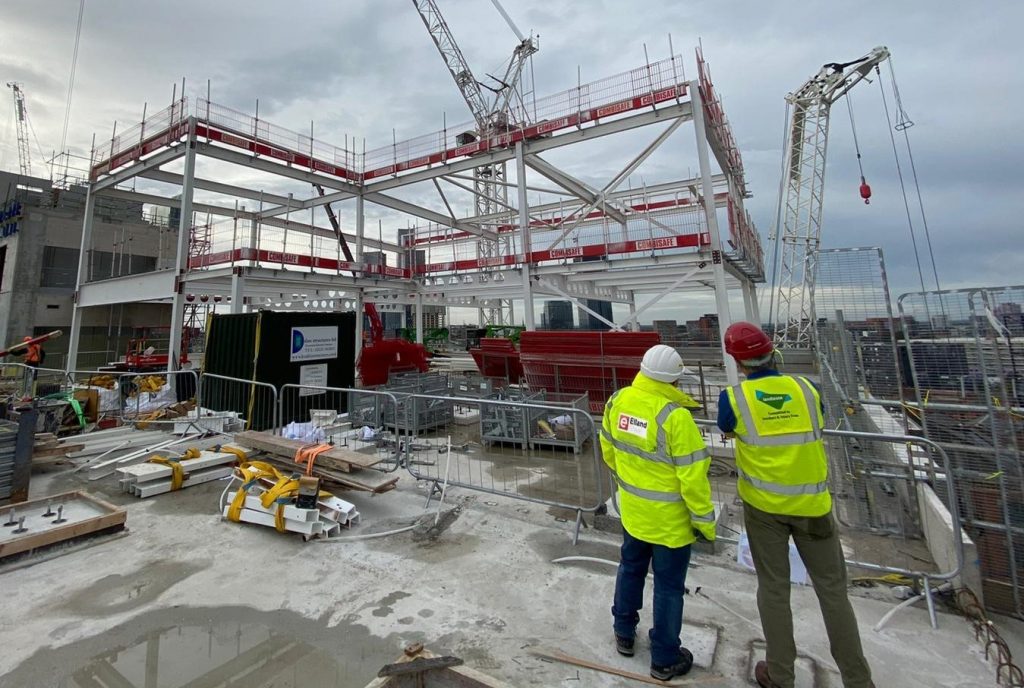There are many methods available to deliver time-related savings on a time-constrained project.
Collaboration. This is the ‘C’ in construction to focus on if you don’t want that other C – cost – to spiral.
To understand the importance of collaboration, it’s also worth identifying exactly what’s at risk without it.
It’s well known that spiralling construction costs often come down to not being able to complete a project on time, so devising, and then keeping to, a realistic programme of works is vital if speed of construction is important for a development. To keep to budget you must first stick to schedule.
There are plenty of reasons why a project could be delayed. Some of those are neutral, neither the fault of the client nor the contractor – the great British weather has the potential to hinder even the best laid plans. And some are at least understandable, such as necessary variations to the development. There are then those that become blockers, preventing the next stage of works from starting. But there are some delays that are entirely preventable; particularly those around the scheduling of works. These are also the delays most likely to create additional costs.
Mitigating potential problems
There are a number of planning practices a project manager can use to reduce risks on timings and scheduling. Refining management methods, both in management of personnel and processes, is perhaps the first port of call for this. There are various project management tools available to support on process management and which will also work alongside those being used by your sub-contractors. Complementing this with clear, timely communication to sub-contractors will reduce the risk of time delays.
This then links closely with another recognized planning practice, of scheduling sub-contractors in good time. Identifying which contractors or suppliers are needed at which times, from architects to electrics, as well as understanding their own lead-in times or commitments, will ensure a realistic schedule.
Additionally, involving – rather than simply scheduling – a contractor in the early stages can greatly improve the timings of a project. This is the collaboration.
Involving sub-contractors early
Early collaboration with any sub-contractor will be beneficial and if it’s a steelwork contractor there are some assured benefits.
Depending on the nature of a development, there a number of ways in which timescales can be reduced during the framing of a steel structure. Often this starts with utilising the particular expertise and experience of the sub-contractors then progressing to prefabricating materials off-site before deploying multiple teams to work on the erection simultaneously.
Steel structures can be erected quickly and efficiently – the accuracy of their components and predictability of build allows for accurate planning. It also allows for waste-free erection, as each part delivered and constructed on-site has been created to an exact specification and can even be trial assembled off-site first, to ensure a right-first-time method during build.
Additionally, by having multiple teams erecting the frame in different areas, a main contractor can stick to strict deadlines. Then follow-on trades can then get on site and begin their works sooner, delivering further time-related savings in the programme of works which can amount to between 3-5% of the overall project value (according to SteelConstruction.info).
Meeting tight deadlines
Working in this way we’ve helped main contractors to meet tight deadlines on projects.
Working with GMI Construction we supported the completion of Rotherham United Football Club’s New York Stadium in time for the new season. Here, speed of construction was achieved by multiple gangs working on the steel erection, including four mobile cranes working on each stand simultaneously. The time constraints on this development meant it was essential for the main contractor to run a sequential site programme, with multiple trades working on-site at the same times. On such a busy site, as well as speed, safety was paramount – exclusion zones and strict safety measures were implemented to minimise hazards and reduce risk.
Similarly, working with Wates Construction in Central Leeds, we deployed two teams to work simultaneously, each starting at the building’s opposite sides and working their way from the outer frame to meet in the centre. Working in this way ensured the striking steel structure – a mixed-use, 12-storey development complete with an indoor winter garden and outdoor sky garden – was completed to planned timings.
Collaboration can be key to achieving all project objectives – from meeting deadlines and keeping to budgets to delivering an attractive and functional final building – so it has to be factored in, and sub-contractors or trades involved, as early on as possible.
The examples above demonstrate how working in this way helps to meet the most important of objectives. Visit the Projects section of our website to read about other methods we’ve adopted to meet our clients’ needs.

